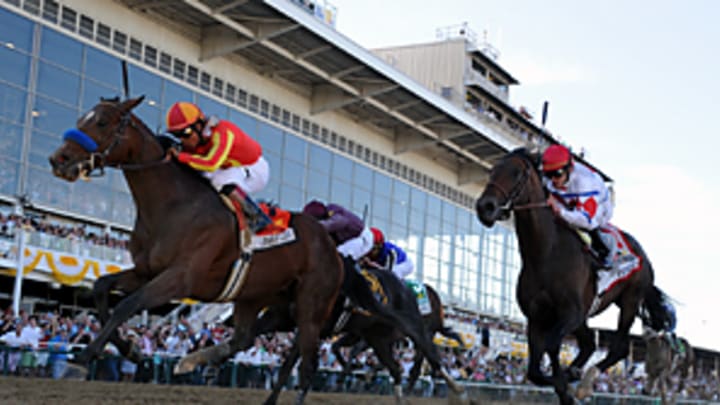What we learned at the Preakness


Here's what we learned after watching Lookin At Lucky win Saturday's 135th running of the Preakness Stakes in Baltimore:
• Lookin At Lucky is good, but great? He was terrific last year, winning five of six races and finishing second in the Breeder's Cup Juvenile while being named 2-year-old champion. But defeats in his last two races started putting his résumé in question, especially since he experienced a world of trouble in both losses. In winning the Preakness Stakes at Pimlico however, Lookin At Lucky showed why he was so highly regarded.
Is he the next great racehorse though? Time will tell, but edging out three rivals by two lengths doesn't exactly suggest greatness.
• That was not the Super Saver we saw in the Kentucky Derby. The Derby winner had no excuses in the Preakness. As jockey Calvin Borel told NBC afterward, Super Saver had a perfect trip and was in a beautiful position stalking the pace set by First Dude. The fractions weren't demanding (First Dude, a 24-1 long shot, still finished second) and were tailor-made for Super Saver to make his move at any time.
For whatever reason, he never fired. Perhaps he bounced after his big effort at Churchill Downs two weeks earlier. Perhaps he didn't like the Pimlico track. Perhaps the rest was not enough time to recover from the Derby, as trainer Todd Pletcher suggested. The world probably will never know why Super Saver didn't run well in the Preakness when the race developed in a way that suited him.
• Jockey Martin Garcia's impact will be overblown. Garcia, who replaced Garrett Gomez aboard Lookin At Lucky, will get a lot of love for turning around the horse's fortunes and helping him get back to the winner's circle, but the 25-year-old jockey didn't do anything that a majority of riders wouldn't have also done. Garcia positioned Lucky three-wide down the backstretch, made a move around the turn and was able to get him to outfinish others down the stretch. Did that ride look any different from the third race at Aqueduct on a Wednesday? Not at all.
It was a smart ride, yes, but hardly extraordinary. Garcia was simply on the best horse, which put his mount in a position to prove that.
• The Belmont is looking thin. Trainer Bob Baffert hinted before the Preakness that Lookin At Lucky would not be pointed to the Belmont no matter what happened at Pimlico. And, given Pletcher's post-Preakness comments that two weeks was not enough time for the Derby winner, it seems unlikely that he will run Super Saver in three weeks in the Belmont.
If neither horse runs, that leaves fast-closing Derby runner-up Ice Box and Dwyer winner Fly Down as the biggest names for the third jewel of the Triple Crown, not exactly must-see TV for non-horse racing fans.
• The Triple Crown gets harder to win. Maybe this is something that we've known all along, not something that just came to light after the Preakness. But with horses being run less often, fewer horses being bred for classic distances and the 20-horse field of the Kentucky Derby not always crowning the best horse, the hurdles a potential Triple Crown winner must overcome seems to get more difficult every year. It has been 32 years since Affirmed last pulled off the feat.
